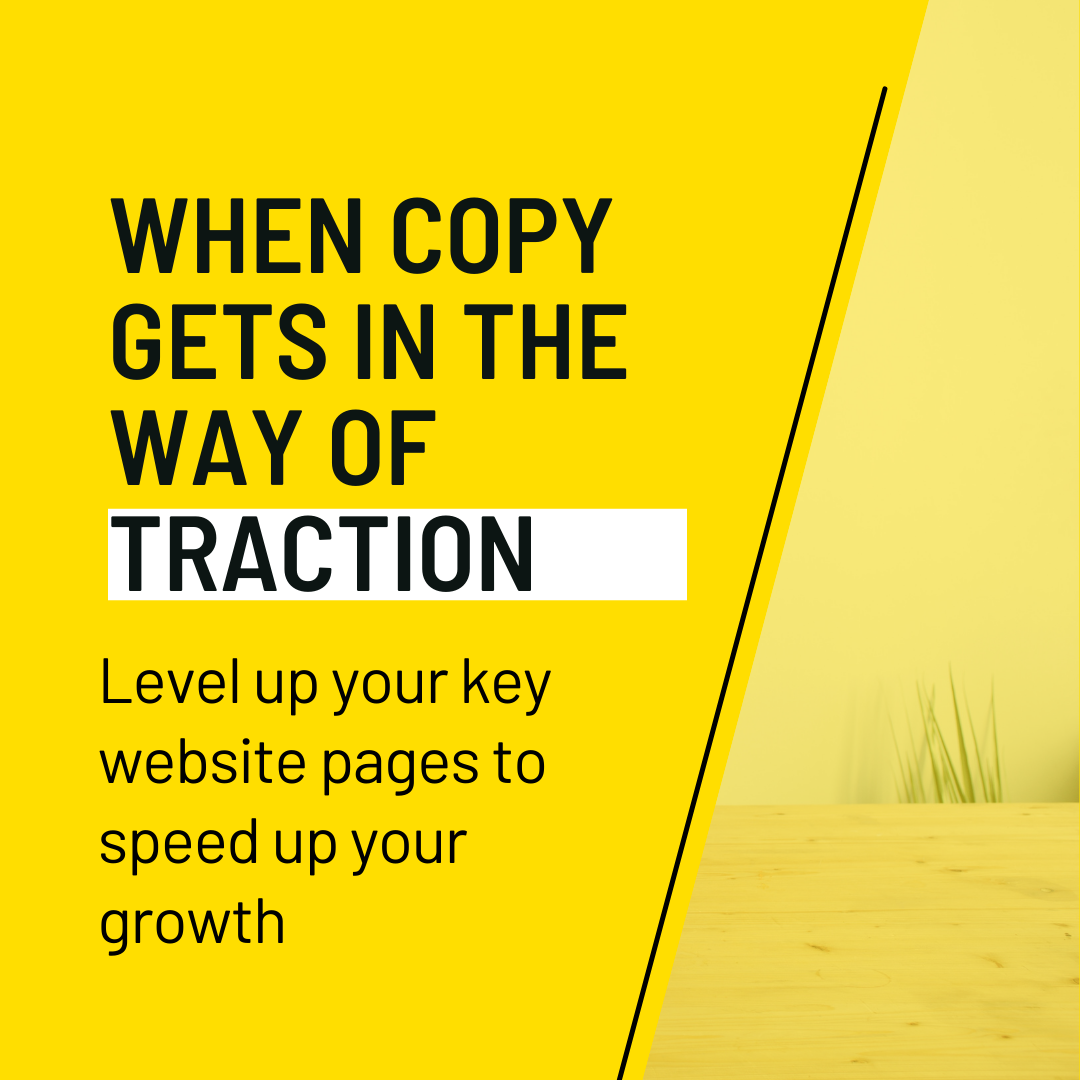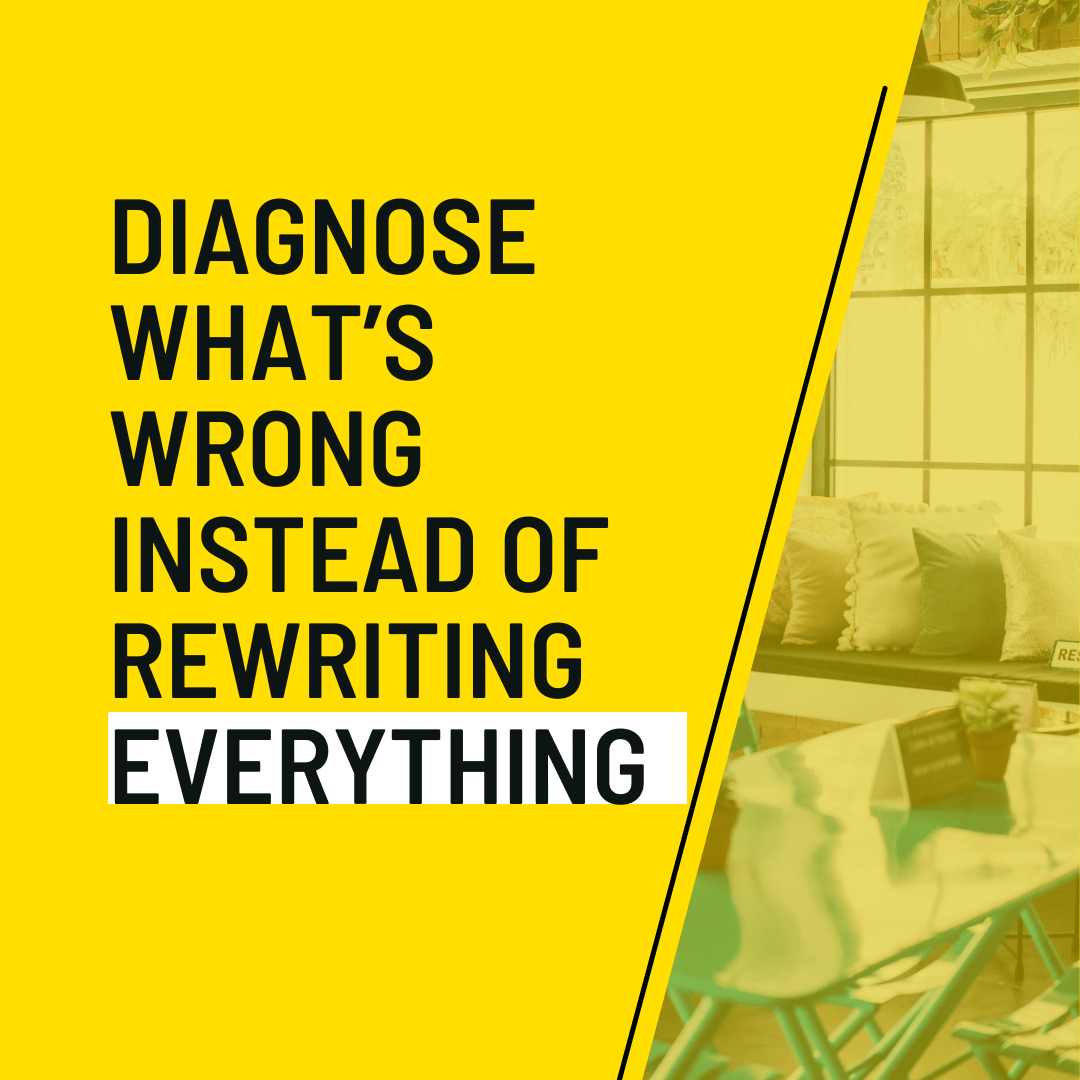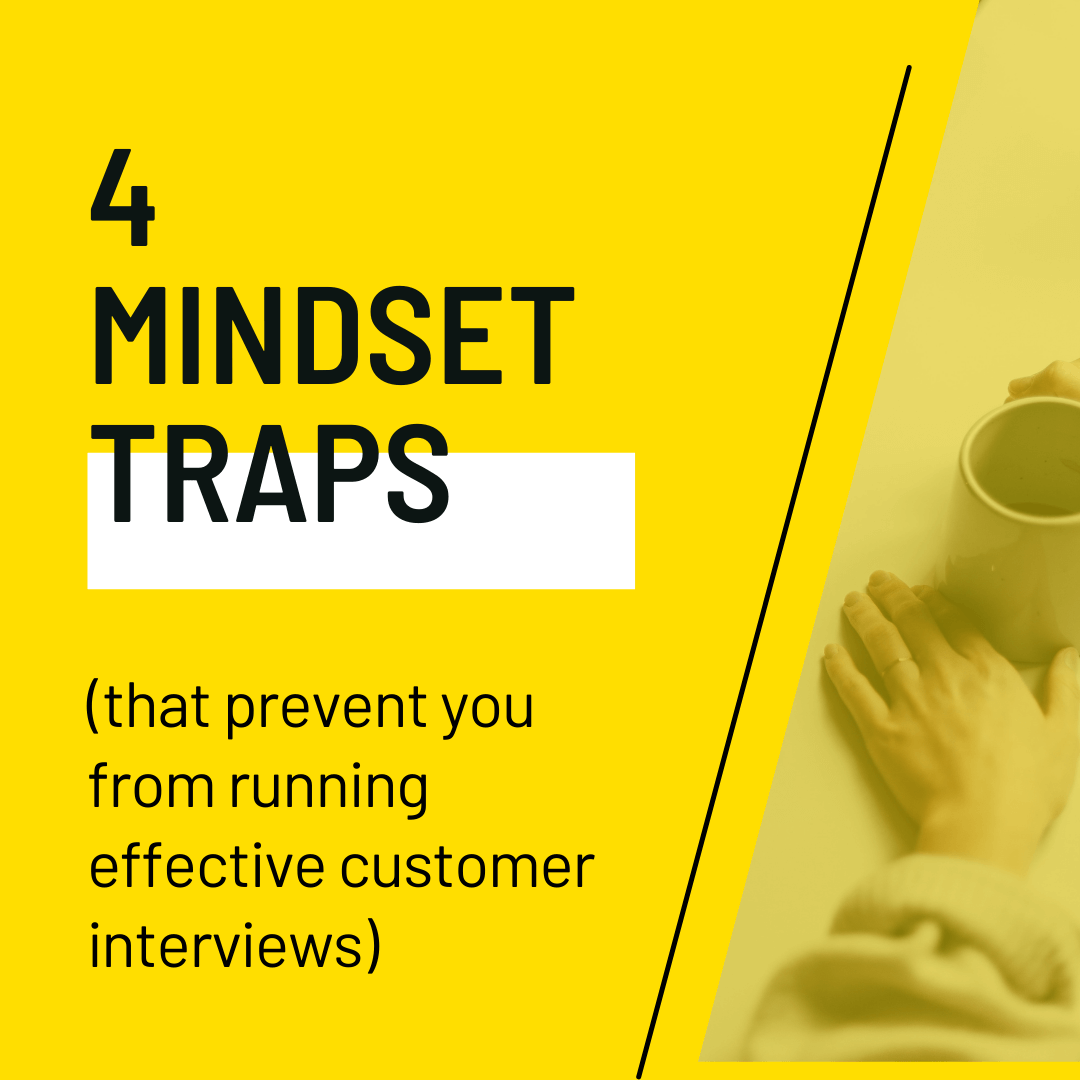A rocketship launch or a leap of faith?
Trying to speed up your startup growth may be slowing it down. If you’re focusing on quick fixes and not pattern-finding.
When my prospects say: “We have no time for this,” “We already know everything about our customers,” “We’ll just A/B test it,” or “Can you just write it?” — what I hear is: “We’re flying blind and kinda like it that way.”
(I have yet to work on a project where all of the research data lined up neatly with assumptions and guesses about conversion drivers for a specific target audience. Never ever has it happened — which is why we need the research phase in the first place.)
Recognizing blind spots that prevent you from seeing patterns
There are cases when “We’ll just launch it and then get feedback” is a valid strategy.
Like, when you’re starting from scratch (and even then, talking to your target market is not a step I’d suggest skipping).
But if you can shorten the guesstimate phase and find out more about your market, flying blind is less of a strategy and more of a blind spot.
It is true that we’ll never have a complete understanding of our customers or competitive landscape.
But there’s a difference between moving forward while flying blind vs moving forward while trying to recognize patterns in prospects’ and customers’ wants and pain points, and adjusting your copy / messaging / outreach to reflect them.
Even more importantly, growth strategy blind spots go beyond customer data.
Flying blind (aka “see what sticks”):
Launch and see what happens
No way to understand the “why” behind the “what” (attracting the wrong prospects — what is happening on the page that prevents the actual target audience from signing up?)
No way to test those guesses and see if they’re accurate
Decisions made based on gut feelings and hunches or best practices that worked for a different market (but may not be a fit for yours)
Tests & iterations for low-hanging-fruit opportunities, possibly missing the big picture (like A/B testing hero section headlines with no customer research)
Looking for patterns:
What do we actually know about our audience — and how has it informed our copy and messaging?
Based on what we know, why do we think the existing copy is not working?
How can we test that?
Is this a quick fix — or a structural issue?
What’s the fastest & most effective way to get answers & iterate?
The costs of focusing on low-hanging fruit (and ignoring patterns)
To be clear, if you see quick wins, go for them! (Like adding social proof to your homepage and product pages — that one is a no-brainer.)
But there’s sometimes a risk that by tinkering around the edges, you’re missing out on opportunities to make a more significant impact.
In other words: how can you know that you’re doing the thing that’ll give your startup the biggest boost?
Unless you’re on top of your customer research, you… probably can’t.
(And this is why I’m such a fan of feedback loops and starting research before you need it.)
Shifting into jetpack mode is easier than you think. 3 questions to start.
Ask better questions. For example, “What’s the quickest way to figure this out (that’s not guessing)?”
Connecting the dots doesn’t have to start with customer interviews. There are multiple other ways to gather initial info to inform your next steps.
For example, searching for rage clicks in Hotjar session recordings can solve the “Why the bounce rate?” mystery much faster than a user panel, if your website has UX issues. Or, it can show you that there’s a bigger problem at hand — and give you some initial ideas about what it may be.
Another example of how a relatively quick research session can help you figure out next best steps: review mining. (Download a guide here.)
For example, if you suspect that your sales are lagging because prospects don’t see a compelling reason to start a trial — or sign up for a demo — you could use review mining to identify:
things prospects love / hate about your product and competitors’ products
frequently-mentioned features that likely deserve to be highlighted early on
memorable ways your users describe your features
Challenge your assumptions. For example, “We think our customers want {X}.” But do they really?
Assumptions are 100% OK — but your growth strategy will be better if you:
Know what they are
Separate wild guesses from educated guesses
When this happens, you can be more confident in the next step.
Sometimes, working through assumptions and testing them can even help you answer this question: “Should this new product exist?” This is what that looks like.
Keep asking better questions. For example, “What is the biggest obstacle we need to remove?”
This is the opposite of the low-hanging fruit approach. But if this one thing wasn’t blocking your way, what would you be able to achieve?
An example: “Most prospects don’t get what we do until they try our product” signals that your messaging is not working the way it should.
If you can answer the “How should we describe the product in a way that attracts ideal prospects?” question, that would make optimizing sales outreach, paid funnels, and organic traffic conversions that much easier.
Think of this as building on solid ground vs shaky foundations.
(Another necessary disclosure: these are my favorite projects, because they involve a lot of pattern-finding and turning internal interviews, customer interviews, survey responses, and reference info into messaging and copy. Like here.)
Speaking of obstacles… The biggest obstacle between startups and pattern-finding
I may be wrong about this, but here’s what I see all the time: fast-growing startups have a lot going on, so CMOs and founders need to stay on multiple initiatives, while thinking ahead, setting goals for the next year or quarter, hiring new people, and more.
Taking time to step back and look at research — let alone run it or find patterns — can be close to impossible, especially if one of your goals is to keep moving fast.
The bad news is that even if you just don’t have time, getting stuck in a cycle of quick fixes is likely to take you off course.
The good news is that research will probably take less time than you think.
And you can always get help.
Let’s uncover conversion-boosting opportunities on your website
I help B2B SaaS startup founders and marketers get more traction with research-driven conversion copy — without slowing down their growth initiatives.









